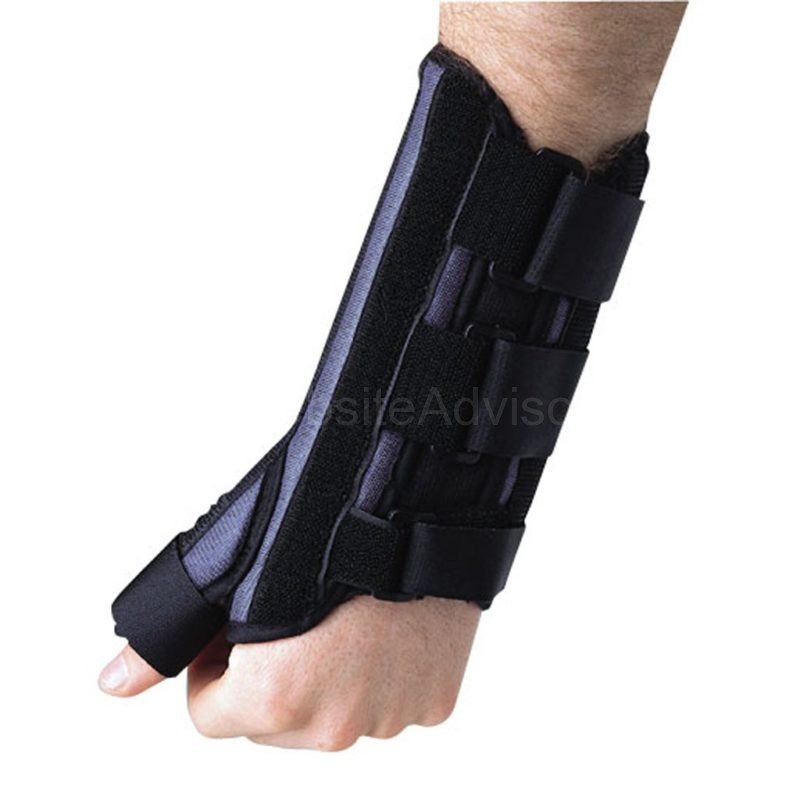Opponents splint is primarily functioned to hold the thumb in a position opposing the index and middle fingers. It is a custom fit or molded brace used to support weak muscles and/or immobilize or limit the motion of joints. It may be made of thermoplastic, canvas, metal, or a combination of materials. This position is more functionally suitable. Its dorsal and palmar bars support the metacarpal arch and prevent it from flattening.

Uses/ Indications of Splint
- Mallet Finger, Trigger Finger, Trigger Thumb, Swan Neck Deformity, Boutonniere Deformity, Lateral Deviation, Fractures, Hypermobility, Ehlers Danlos Syndrome, Arthritis, Broken Finger, Jammed Finger
- By the emergency medical services or by volunteer first responders, to temporarily immobilize a fractured limb before transportation;
- By allied health professionals such as occupational therapists, physiotherapists, and orthotists, to immobilize an articulation (e.g. the knee) that can be freed while not standing (e.g. during sleep);
- By athletic trainers to immobilize an injured bone or joint to facilitate safer transportation of the injured person; or
- By emergency department (ED) physicians to stabilize fractures or sprains until follow-up appointment with an orthopedist.
- A wrist splint decreases recovery time by immobilizing, stabilizing, and protecting a healing injury.
- Boxer’s Fracture
- Radial nerve palsy at the wrist level
- Median nerve palsy at the wrist level
- Ulnar nerve palsy
- Other pathological conditions of the fingers
- Wrist Sprain
- Wrist Strain
- Soft Tissue Injury
- Distal Radial Fracture
- Distal Ulnar Fracture
- Wrist Contracture Yaya
- General Wrist Pain
- Scaphoid Fracture
- Lunate Fracture
- Carpal Tunnel Syndrome
- First Metacarpal Fracture
- Injury to the Ulnar Collateral Ligament of the Thumb
- De Quervain’s Tenosynovitis
- Hamate Fracture
- Sprained or strained wrist
- Wrist tendonitis
- Carpal Tunnel Syndrome
- Post-cast removal
- Broken wrists (depending on the type and degree)
- The sprained wrist brace can be easily put on, adjusted, and removed thanks to a lace-up closure system.
- Graduated extension from the spastic clenched fingers and wrist
- Corrects and controls radial or ulnar deviation
- Controls wrist drop
- Helps restrict arthritic changes and deformity associated with neuromuscular impairment
- Positions the flaccid hand and wrist
- Maintains skin integrity by absorbing moisture, allowing air flow and preventing skin maceration on palmer surface
- Allows for increased hygiene care by permitting nail care and cleaning of palmer surface
References








